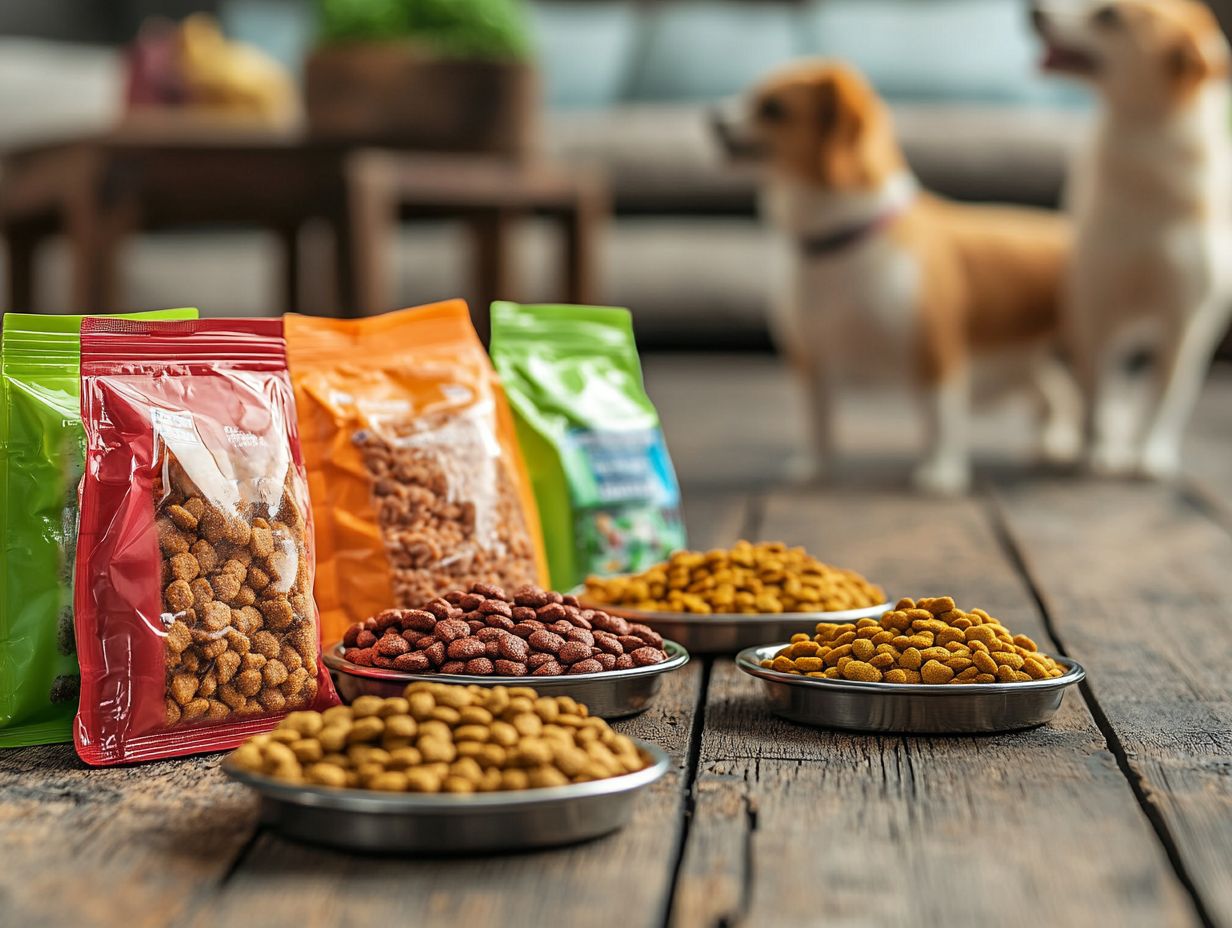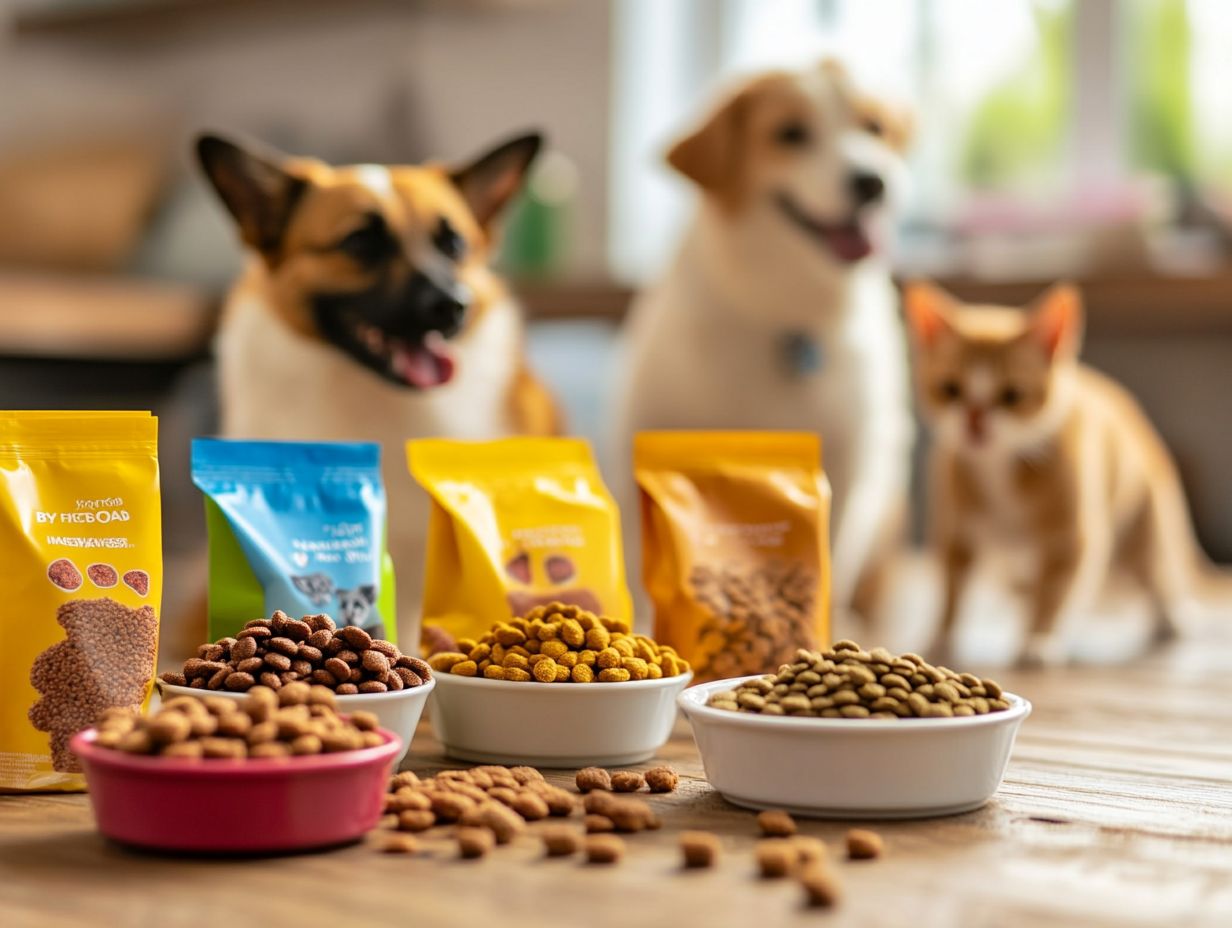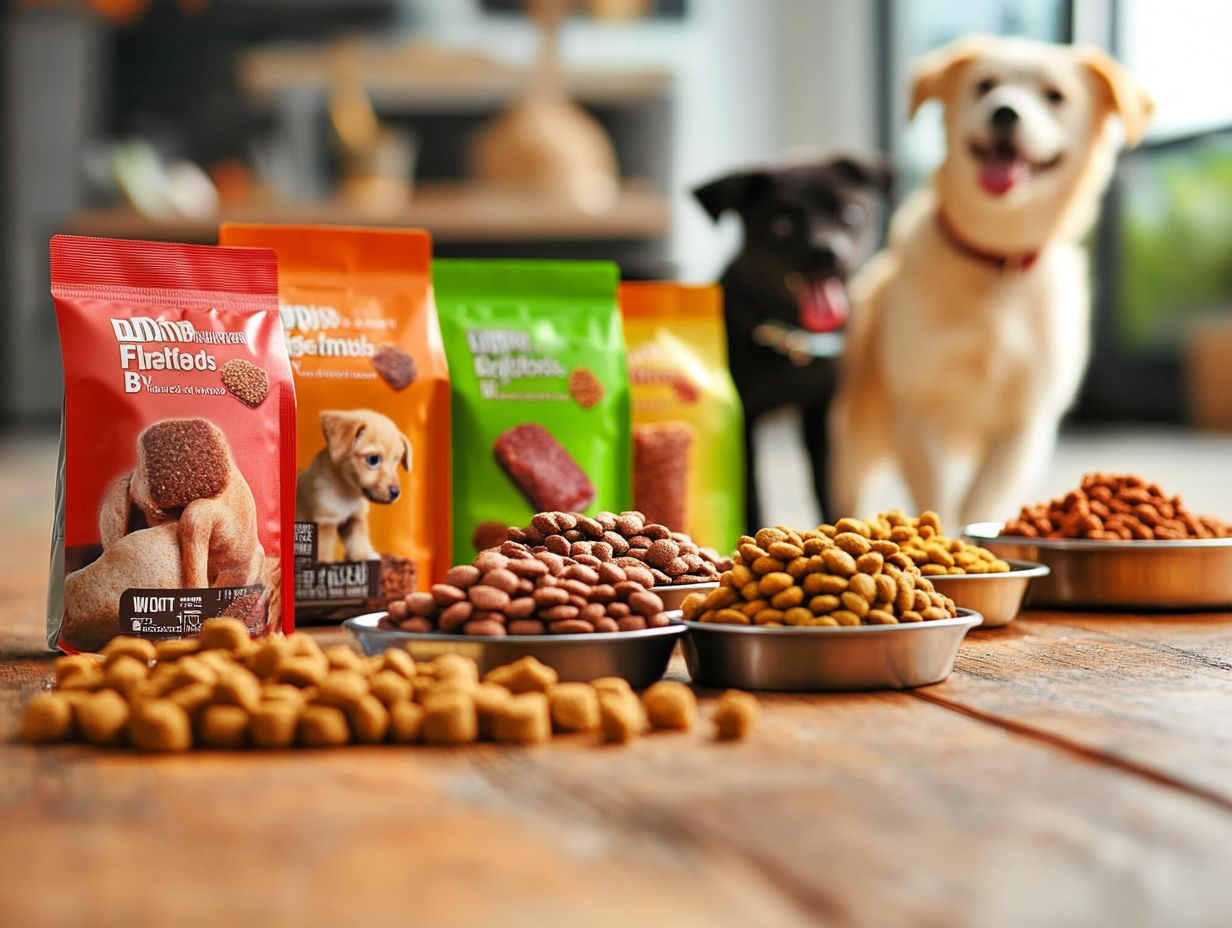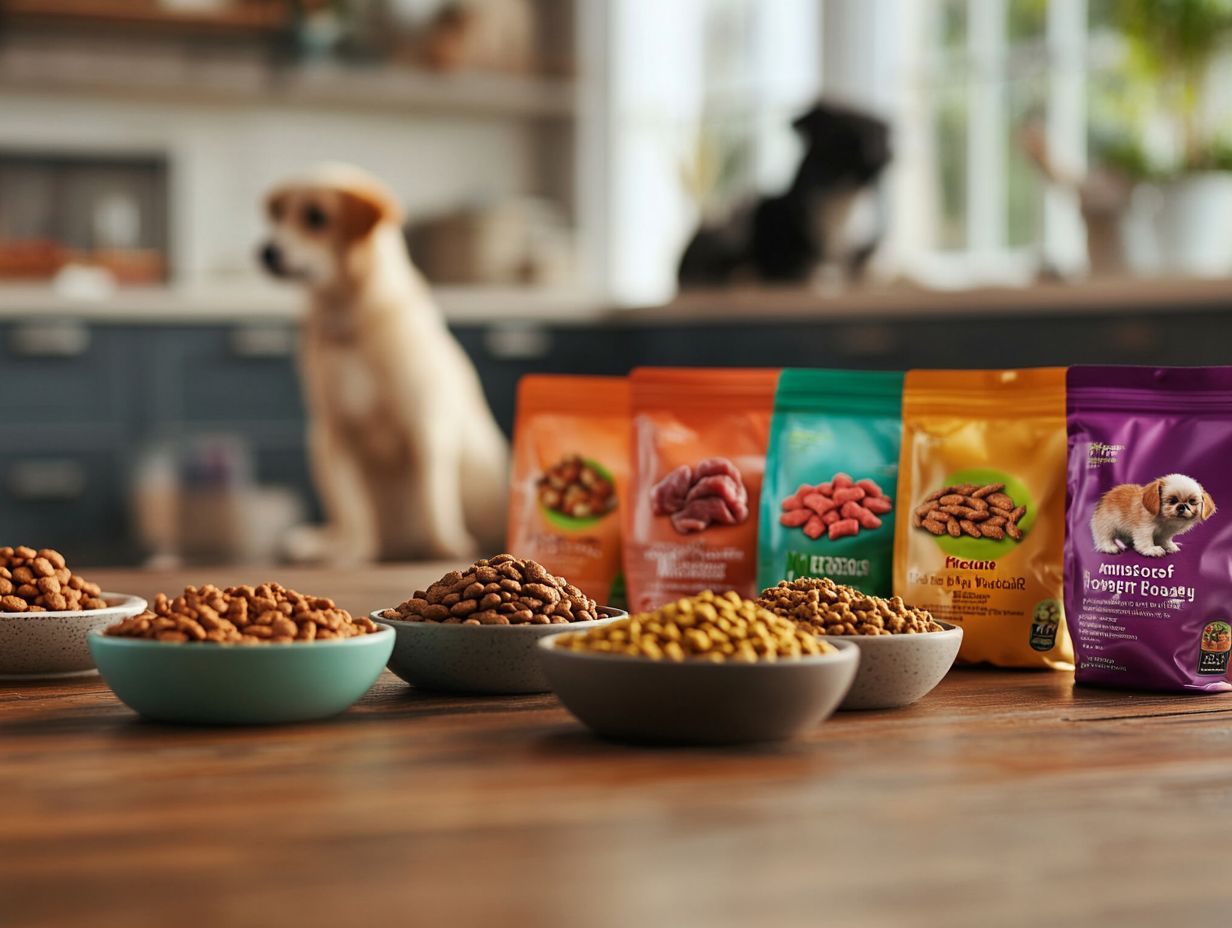Meat by-products often raise eyebrows among pet owners, sparking questions about what these ingredients really are and their role in pet food. It’s important to note that cats are obligate carnivores, meaning their dietary needs are primarily met through animal-source proteins.
This article explores the various types of meat by-products, their nutritional benefits, and potential risks for your furry companions, including concerns about microbial contamination and ingredient standards. It also highlights the potential nutritional deficiencies associated with diets lacking animal-source proteins, especially concerning raw or vegan diets.
It clarifies common misconceptions, examines regulatory standards defined by AAFCO, and suggests alternatives such as organic pet cuisine and grain-free pet foods while balancing their benefits and risks. Consulting veterinary professionals before making dietary changes is crucial.
By the end, you’ll have a clearer understanding of meat by-products, empowering you to make informed choices for your pet’s diet.
Key Takeaways:

What Are Meat By-products?
Meat by-products are secondary products derived from the processing of animals used in food production. These primarily include animal-origin by-products, such as organs, bones, and connective tissue, which serve as alternative protein sources for various applications, including animal feeds and pet foods.
Although they are sometimes perceived as low-grade or even hazardous, when sourced and processed according to appropriate quality standards, by-products can enhance the protein content of pet foods and add significant value. The rendering process, a method of cooking animal parts to improve safety and nutrient availability, ensures these products are safe and nutritious.
What Are The Different Types Of Meat By-products?
Various types of meat by-products include animal protein products, such as meat meal, which are rendered and processed to ensure they are safe, and that nutrients are readily available. These products can originate from animals like beef and chicken and are essential for pet food manufacturing, providing a source of crucial amino acids, nutritional value, and energy.
Plus meat meal, other by-products include bone meal, which is rich in calcium and phosphorus, and animal fat, often used to enhance palatability and energy content. However, pet owners should be aware of common allergens in meat by-products and potential toxic ingredients that may be present in low-quality products.
The rendering process itself involves cooking raw materials at high temperatures to separate fat from protein and eliminate harmful pathogens. This process not only enhances nutritional value but also promotes the sustainable use of all parts of the animal, thereby reducing waste and encouraging a more responsible approach to pet nutrition, aligned with quality ingredients and natural ingredients.
Why Are Meat By-products Used In Pet Food?
Meat by-products are commonly used in pet food for several reasons, including adherence to ingredient standards and processing conditions:
- Nutritional Content: Meat by-products are rich in amino acids, fatty acids, vitamins, and minerals, making them valuable additions to pet food that provide essential proteins and nutrients.
- Weight Management: Plus their nutritional benefits, meat and poultry by-products are typically lower in calories than whole meats, making them beneficial ingredients for formulations aimed at pets requiring weight management.
- Cost-Efficient Ingredient Choice: By-products from meat processing offer an economical option in pet food formulation, as they are generally less expensive than whole organs and muscle proteins, making them suitable for dry meals and kibble.
Are Meat By-products Safe For Pets?
Yes, meat by-products can be safe for pets when sourced from reputable suppliers and processed through safety protocols designed to eliminate microbial contamination while adhering to FDA regulations. These safety measures are crucial in ensuring that by-products derived from animal processing do not pose health risks.
The rendering process, which involves heating raw materials at high temperatures, effectively kills pathogens and reduces moisture, resulting in a stable and safe product. Regulatory standards require thorough inspections and testing of these materials before they enter the market.
When choosing the right pet food, always look for clear labeling and consult your veterinarian for guidance on your pet’s specific dietary needs.
By following such stringent quality controls, manufacturers can significantly reduce health concerns often associated with pet food, providing pet owners with confidence in the safety, nutritional value, and ingredient transparency of the food they offer their cats.
Are There Any Nutritional Benefits To Meat By-products?
Meat by-products can provide nutritional benefits as they are quality sources of protein that enhance the nutritional value of pet foods and provide transparency on pet food labels and ingredient lists. However, it’s important to consult with a veterinarian before considering their inclusion in a cat’s diet.
By-products such as organs, bones, and other animal parts not intended for human consumption can contain essential amino acids that support cats’ growth and daily development. Additionally, they may include a variety of micronutrients and fatty acids that contribute to a healthy coat and skin. However, they should not replace primary animal protein sources in a cat’s diet.
When examining pet food labels, consumers will find clear listings of these items, which not only fosters trust but also educates pet owners about nutritious and high-quality ingredient options for their cats. Understanding these ingredients enables owners to make informed choices regarding their cats’ nutritional needs.
What Are The Potential Risks Of Feeding Meat By-products To Pets?

While meat by-products can offer nutritional benefits, there are potential risks associated with health issues stemming from disease transmission due to improperly processed products. Additionally, consumer concerns regarding ambiguous ingredient definitions and sourcing practices, such as those expressed in consumer opinions and pet food commercials, can significantly influence perceptions of cat health and nutritional needs.
For instance, some pet owners may worry about the use of unspecified animal sources when they discover that the meat in their pet food may come from unspecified animals or unclear origins. These concerns also extend to potential contaminants and diseases, such as salmonella or E. coli, which can be heightened by inadequate labeling and poor ingredient aesthetics. It’s essential to emphasize the necessity for proper cooking and handling practices to mitigate these risks.
Consequently, how meat by-products are represented and marketed on packaging can impact consumer purchasing behavior, ultimately affecting the sales and market share of certain pet food brands.
How Are Meat By-products Regulated In Pet Food?
Meat by-products in pet food are regulated through ingredient safety processes and nutritional standards established by the AAFCO and WSAVA, enforced by the FDA.
What Standards Do Pet Food Companies Have To Meet When Using Meat By-products?
Pet food companies must adhere to a variety of standards when using meat by-products. These standards include ingredient requirements that ensure the safety and quality of the products, helping to maintain positive consumer perceptions.
Stringent safety procedures are in place, mandating the inspection and testing of all ingredients to eliminate any potential contaminants. Comprehensive quality control measures are implemented throughout the entire production cycle to ensure that each batch meets both regulatory standards and specified nutritional parameters.
By rigorously following these processes, companies can guarantee the safety and quality of their products, thereby fostering consumer confidence. Ultimately, how these products are processed and labeled will significantly influence consumer perceptions.
Transparency regarding sourcing and quality will be crucial in building consumer loyalty in an increasingly discerning marketplace.
Are There Any Labeling Requirements For Meat By-products In Pet Food?
Yes, there are specific labeling requirements for meat by-products in pet food that promote ingredient transparency, allowing pet owners to make informed decisions. These requirements mandate that manufacturers clearly label ingredients, defining what constitutes meat by-products, which typically include parts of the animal not classified as muscle meat, such as organs and bones.
This transparency is crucial, as it helps pet owners understand exactly what their pets are consuming. The structure of these labels often emphasizes the most prominent ingredients first, providing immediate insight into the nutritional content.
By being aware of these specifications, pet owners can better evaluate the quality of the food they choose, ensuring their cats receive a balanced diet tailored to their health needs, including considerations for healthy weight and food allergies.
Furthermore, it’s important to acknowledge that different life stages (kittens, adult, senior) can influence the nutritional role of meat by-products in a cat’s diet.
What Are Some Common Misconceptions About Meat By-products In Pet Food?
Common misconceptions about meat by-products in pet food include the belief that they originate from unhealthy sources or contain ingredients unfit for human consumption. These misunderstandings contribute to negative public health concerns, consumer stigmas, and misinformed consumer concerns. It is important to note that cats are obligate carnivores, meaning they require animal-source proteins to meet their nutritional needs according to veterinary nutrition standards.
Do Meat By-products Contain ‘Unfit For Human Consumption’ Ingredients?
No, meat by-products do not contain ingredients deemed ‘unfit for human consumption.’ Responsible manufacturers ensure that these by-products consist solely of ingredients that meet strict specifications and undergo rigorous safety and quality processes, in compliance with FDA enforcement and humane slaughter guidelines. When sourced from healthy animals, meat by-products can provide essential nutrients for cats.
This common misconception arises from a lack of understanding regarding the stringent regulations governing pet food production. Ingredients unfit for human consumption are explicitly prohibited in pet food, meaning that meat by-products can only originate from healthy animals processed in licensed and regulated facilities.
Continuous inspections and quality checks are conducted throughout the food production process to uphold safety standards. While animal-origin byproducts may include parts of the animal not typically found in human food, they are sourced and processed in a manner that guarantees both safety and beneficial nutrients for pets. A diet lacking in animal-source proteins can lead to nutritional deficiencies, particularly for cats.
Do Meat By-products Contain Diseased Or Rotting Animal Parts?

Meat by-products are not derived from diseased or rotting animal parts; rather, they come from healthy animals. These by-products are processed using a rendering process specifically designed to mitigate health risks and prevent disease transmission.
This rendering process involves stringent safety precautions, including inspecting raw materials before processing and employing high-temperature sterilization techniques that effectively eliminate harmful pathogens. Ongoing audits and adherence to regulatory standards ensure that only safe, high-quality ingredients are utilized, mitigating health concerns such as microbial contamination.
By highlighting these essential health safeguards, concerns about contamination can be addressed, thereby preserving the integrity of the final products and allowing consumers to trust the safety and quality of animal-origin byproducts and secondary products used in pet foods. It is crucial for cat owners to be aware of potential allergens and toxic ingredients in both meat by-products and alternative protein sources, providing practical safety tips.
Do Meat By-products Contain Hormones Or Antibiotics?
Typically, meat by-products do not contain added hormones or antibiotics, as reputable sources adhere to strict ingredient standards and regulatory guidelines governing their production to meet the nutrient content required for pets.
These regulations are designed to ensure consumer safety and protect against contamination or unsafe practices that could pose risks to public health and pet food safety.
Two key organizations responsible for overseeing these practices are the United States Department of Agriculture (USDA) and the Food and Drug Administration (FDA), which ensure that manufacturers comply with safe and transparent sourcing practices to meet pet food manufacturing standards.
As consumers increasingly prioritize the safety and quality of their food products, it is essential for them to source meat by-products from manufacturers who follow these guidelines and can provide transparent information about their practices.
What Are Some Alternatives To Meat By-products In Pet Food?
Alternatives to meat by-products in pet food include high-quality protein sources such as whole meats, as well as plant-based options. While plant-based options exist, they may not meet the nutritional needs of obligate carnivores like cats and should be approached with caution. These alternatives cater to pets with food allergies or sensitivities, including those requiring grain-free diets or organic pet cuisine.
What Are Some High-quality Protein Sources For Pets?
High-quality protein sources for pets include whole meats such as chicken and beef, which provide essential nutrients that meet their nutritional needs and support overall health. These carefully selected proteins contain amino acids, vitamins, and minerals crucial for building strong muscles and enhancing immune function, contributing to a healthy weight and vitality.
When considering dietary needs for specific conditions like kidney disease or diabetes, it is important to outline appropriate nutrient profiles and emphasize the necessity of consulting a veterinarian for tailored advice.
Furthermore, proper food storage and handling practices should be implemented, such as identifying spoilage signs, to ensure pet food safety. If supplements or additives are mentioned, their necessity and correct dosages should be clarified to emphasize their role in a balanced diet for cats.
Discussions on raw diets should highlight both the potential benefits and risks, reiterating the importance of veterinary consultation before making dietary changes. Finally, adherence to the latest feline obesity guidelines is essential for weight management, linking it to the importance of a balanced diet that meets the unique nutritional needs of cats at different life stages.
In contrast to meat by-products, which may offer less digestible or lower-quality protein, whole meats ensure optimal absorption and utilization by your pet’s body. Alternative protein sources like fish, lamb, and eggs not only introduce a variety of flavors but also provide balanced omega fatty acids, promoting healthy skin and coat. These quality ingredients help address consumer concerns about protein sources in pet food.
By incorporating a diverse range of high-quality protein sources into their pets’ diets, owners can help ensure that their pets receive sustained energy and vitality while meeting their nutritional requirements. However, it is crucial to consult with a veterinarian before changing a cat’s diet, especially when considering plant-based protein options or raw diets, to ensure the nutritional needs are adequately met.
Are There Any Plant-based Protein Options For Pets?
Yes, there are several plant-based protein options available for pets that cater to different dietary preferences and food allergies. These include legumes, peas, and certain grains found in grain-free pet foods or organic farming. It is important to note that cats are obligate carnivores and require animal-source proteins; while some plant-based proteins can be included, they should not replace animal proteins in a cat’s diet.
These ingredients provide essential amino acids but also offer beneficial vitamins, minerals, and fiber, contributing to overall health. However, potential nutritional deficiencies associated with an inadequately balanced plant-based diet for cats, such as taurine deficiency, can arise if animal proteins are significantly reduced. For instance, chickpeas and lentils are high in protein and can serve as meat substitutes, but their role should be limited and carefully monitored.
Quinoa and brown rice provide healthy sources of carbohydrates that complement the protein content while promoting healthy digestion. Additionally, these grains help address ingredient aesthetics that some pet owners prefer in their pet’s diet.
Incorporating these plant-based options into a pet’s diet can help ensure balanced nutrition while potentially reducing the use of meat by-products, leading to a more holistic approach to pet wellness and meeting various nutritional advice. However, the risks associated with homemade diets must be acknowledged, and consulting with a veterinary nutritionist is essential to avoid nutrient imbalances.
How Can Pet Owners Make Informed Decisions About Meat By-products In Pet Food?
Pet owners can make informed decisions about meat by-products in pet food by scrutinizing ingredient transparency, understanding pet food labels, and taking into account consumer opinions about the safety and quality of these products. Understanding the ingredient definitions and nutritional values of components is crucial for making the best choices for their pets.
What Should Pet Owners Look For On Pet Food Labels?

Pet owners should prioritize clear ingredient transparency on pet food labels, which should list meat by-products and other components in a way that aligns with their pets’ nutritional needs and preferences. Understanding these details is essential, as many labels can be misleading or vague, especially regarding ingredient list and nutritional value.
Owners should look for products that emphasize high-quality, recognizable ingredients rather than fillers or artificial additives. This approach ensures that pets receive a balanced diet and demonstrates a commitment to their well-being and food quality.
Additionally, educating themselves about sourcing practices and potential allergens can enable pet owners to make informed purchasing decisions. Common allergens for cats include beef, dairy, fish, and chicken. By considering these critical factors, pet parents can select food that promotes their pets’ health and vitality, ultimately enhancing their quality of life. Organizations like AAFCO and feed control officials provide guidelines that support humane slaughter and proper ingredient definitions.
How Can Pet Owners Research The Quality Of Meat By-products In Pet Food?
Pet owners can assess the quality of meat by-products in pet food by researching ingredient sources, understanding safety protocols, and reading consumer reviews to ensure they choose high-quality products. This includes considering the rendering facilities and processing conditions.
Exploring reputable websites and participating in online forums dedicated to pet nutrition can offer valuable insights. It is important to select brands that disclose the origin of their ingredients and maintain transparency regarding their manufacturing practices. Pet food safety can be further assured by adhering to AAFCO positions and FDA enforcement. Proper food storage and handling practices are equally important; owners should be aware of how to recognize spoilage in both commercial and homemade diets to ensure safety.
Additionally, pet owners should be aware of the specific dietary needs of different life stages, such as kittens, seniors, pregnant, and nursing cats, and how these needs relate to protein sources. Weight management should also be considered, linking it to specific calorie needs for different breeds and life stages, referencing the latest obesity guidelines to support informed choices.
Disclaimer: Pet owners should consult with a veterinarian before making significant changes to their cat’s diet.
Consumer reviews often provide feedback on overall satisfaction and the health effects observed in pets after they switch to specific foods, offering a firsthand perspective. Additionally, understanding regulatory standards and certifications, such as those from AAFCO and WSAVA, can significantly help pet owners identify which brands prioritize safety, ensuring that their furry companions receive the wholesome nutrition they deserve. This includes awareness of heat treatment and other safety processes involved in pet food manufacturing.
Frequently Asked Questions
What are meat by-products or animal-origin byproducts?
Meat by-products or animal-origin byproducts are parts of animals that are not considered suitable for human consumption, such as organs, bones, and other tissues, that are used in pet food and other products. These can include meat meal and other secondary products. For obligate carnivores like cats, these ingredients are crucial for providing essential animal-source proteins.
Are meat by-products or animal-origin byproducts safe for my pet to eat?
Yes, meat by-products or animal-origin byproducts are safe for pets to eat. They are regulated by the FDA and are subject to strict standards to ensure they are safe for consumption, as per AAFCO guidelines. These standards address potential issues such as microbial contamination and disease transmission.
Why are meat by-products used in pet food?
Meat by-products are used in pet food because they are a valuable source of nutrition for pets. They provide essential nutrients, particularly for cats, who require animal-source proteins to avoid potential nutritional deficiencies, such as taurine deficiency. Using these by-products helps reduce waste in the meat industry, making them a cost-effective ingredient in pet foods.
Do meat by-products or animal-origin byproducts provide any nutritional benefits for my pet?
Yes, meat by-products or animal-origin byproducts provide essential nutrients for pets, including protein, vitamins, and minerals. They can be more nutrient-rich than muscle meat. This makes them a valuable addition to a pet’s diet, contributing to balanced nutrition and overall pet wellness.
What should I look for on pet food labels when it comes to meat by-products or animal-origin byproducts?
When looking at pet food labels, it is important to look for specific named sources of meat by-products, such as chicken by-products or beef by-products. This ensures that the by-products are from a specific animal and not a mix of different sources. Ingredient transparency is key to understanding the quality of the ingredient list.
Are there any concerns about using meat by-products or animal-origin byproducts in pet food?
Some pet owners may have concerns about the quality of meat by-products or animal-origin byproducts used in pet food. However, as long as they are sourced from reputable suppliers and regulated by the FDA, meat by-products can be a safe and nutritious addition to a pet’s diet. Ensuring proper heat treatment and maintaining high food quality standards can help alleviate these concerns.
What are the risks of feeding a raw or homemade diet?
Feeding a raw or homemade diet can pose risks such as bacterial contamination and potential nutritional imbalances. While some benefits may include control over ingredients, it is crucial to consult a veterinarian to ensure a balanced diet that meets your pet’s needs.
How can I ensure the quality of meat by-products?
To ensure the quality of meat by-products, choose brands that are known for transparency and adhere to good manufacturing practices. Always check the ingredient list for specific animal sources and avoid brands that do not disclose their sourcing methods.
What storage and handling practices should I follow for pet food?
Proper storage of pet food includes keeping it in a cool, dry place and sealing it tightly to prevent spoilage. Always check for signs of spoilage, such as unusual smells or color changes, before feeding your pet.
What should I look out for regarding allergens in my cat’s diet?
It is essential to check for allergens or toxic ingredients when considering any diet for cats, especially with homemade options. Common allergens include certain grains and proteins, and consulting with a veterinarian can help identify safe choices for your pet.